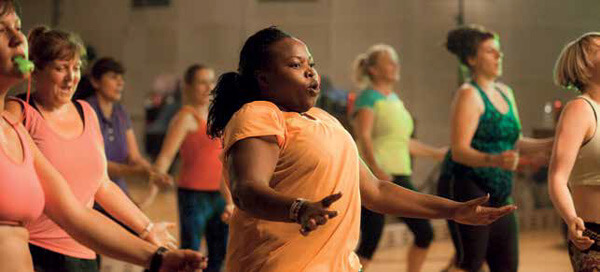Resistance Training
Look, I’m not suggesting – heaven forbid – that it’s easy to persuade people to switch from Coke to Pepsi, or Apple to Samsung, or to try out a new own-label lipstick, or to trade up to Sky entertainment, or to take an impromptu Airbnb weekend in Paris or Rome.
Come to think of it, though, that is precisely what I am suggesting. Marketing within life’s happy categories really isn’t that hard, and we shouldn’t pretend that it is. It’s not that the consumer is meeting you halfway – they’re coming nine-tenths of the way and you just need to shift their direction ever-so-slightly at the very end.
The moment you want their attention, they’re already leaning forward. In a world where pretty much everyone loves chocolate, how hard can it be to get them to try yours? Beer? Sure! Ice-cream? Lovely! Fashion and beauty? I’m in!
This is seduction rather than real persuasion and, like all seduction, is all the more effective when the one being seduced makes most of the running. “Oh, why not?” That’s the response you want and, in happy categories, unless you try really hard to screw it up, it is what you’re going to get.
There are marketers who have never worked in any other kind of market, who move from one attractive canvas to another and think what they do is difficult because they have no idea of the orders of magnitude that separate their day job from what “difficult” really entails. I call them feel-good marketers and, in truth, I envy them.
But I admire the other type – resistance marketers, the ones who work on the negative side of the human psyche, trying to persuade people to buy things and do things that they have not the remotest interest in buying, doing or even considering.
In this category come most forms of insurance and savings – in fact, financial services in general – and tediously necessary things such as batteries, utilities, cleaning fluids and tyres.
 It includes, of course, anything that comes under the heading “distress purchase”. But look on the bright side – at least these are still just purchases, a small transactional moment requiring people to part with cash and vaguely recognise your brand while sighing with indifference. Along the scale of resistance, they come only about a third of the way.
It includes, of course, anything that comes under the heading “distress purchase”. But look on the bright side – at least these are still just purchases, a small transactional moment requiring people to part with cash and vaguely recognise your brand while sighing with indifference. Along the scale of resistance, they come only about a third of the way.
At the really tough end are those initiatives that require people to change entrenched behaviour and do things that they don’t do right now – such as move about – or stop doing things they’ve done forever, such as smoking.
Example: a British Heart Foundation report this month showed that one in four adults in England get less than 30 minutes of exercise a week and that, in the north-west, 47% are so inactive that they never break sweat at all. The cost to the NHS for related morbidity is estimated at £1.2bn a year.
At some point, someone, somewhere in the political firmament, will decide “something must be done” – and another someone, somewhere in the communications industry, will head a team and a taxpayer-funded budget dedicated to doing it. This is true resistance marketing – especially if directed, as it doubtless would be, to prioritise the north-west.
I’ve been lumbered with my fair share of resistance categories over the years and have started to mumble that it’s the sort of thing all marketers should do at least once. There’s no justification for that other than envy and spite – like the older men who used to say of younger men that a spell in the army wouldn’t do them any harm: it stems from seeing them have too much carefree fun.
It does mean, though, that I have some counsel to offer to those who find themselves moving from happy to resistance categories for the first time – from pushing on open doors to getting them slammed and locked shut in your face, or not finding a door at all but just a blank wall of defiance.
Forget proxies. When you’re selling nice things, a hike in awareness can be an end in itself, since it’s usually a stepping stone to trial. In high-resistance markets, it’s a meaningless metric. “Five a day” is so ubiquitous that it has become part of the vernacular – but only 26% of adults regularly eat the required portions of fruit and vegetables. You need to ruthlessly measure action.
Look for nuances. It’s easy to see resistance as a single problem to attack. But it could be multiple problems, with some more tractable than others. What I like about “This girl can” is that it found a new angle on inactivity – embarrassment – and focused on making a difference there (see panel).
Be grateful for small gains. No-one’s meeting you halfway, no-one’s leaning forward. If you shift the needle just a few per cent – be happy.
The lottery-funded Sport England initiative is aimed at closing the gender gap in sport participation, with research in 2013 showing that 1.78 million fewer women than men exercised regularly, despite 75% saying they would like to.
The team identified a number of barriers, including familiar ones such as time and cost, but alighted on a new insight strongly felt by many women: a fear of judgment.
FCB Inferno created a manifesto rather than a tagline to guide the creative process: “Women come in all shapes and sizes and all levels of ability. It doesn’t matter if you’re a bit rubbish or an expert. The point is you’re a woman and you’re doing something.”
The original video was viewed online 37 million times. By 2016, the gender gap had closed to 1.73 million.
